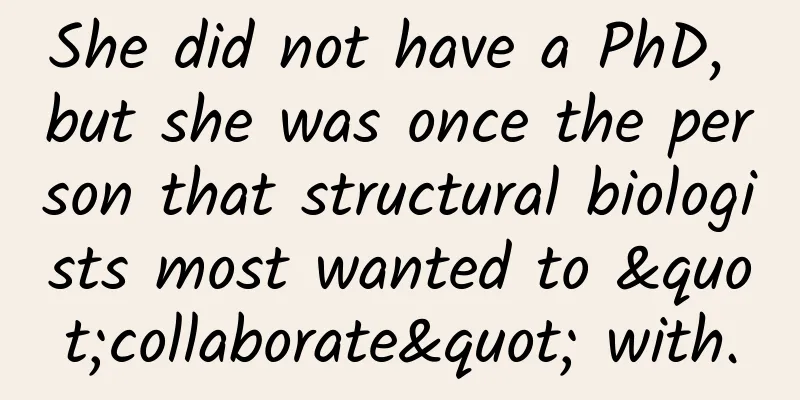Puchang Rice Terraces: A Psychedelic Play of Colors and Lines

|
Puchang Terraces, the granary of Ganluo County. Ganluo County is located in the southwest of Sichuan Province and the north of Liangshan Yi Autonomous Prefecture. It is the only way for the Southern Silk Road and the Ancient Tea-Horse Road. It is also the northern gate of Liangshan Prefecture and a place where Han, Tibetan and Yi people live together. It is said that the Puchang Terraces were first reclaimed by the Popeng Tusi with the Jiribo Sacred Mountain as the center. Later, they were continuously expanded at different times, eventually forming the scale we see today. Puchang Rice Terraces actually consists of three major areas, namely Puchang Dam (Ping), Aerdi Dam (Ping), and Shihai Rice Terraces. "Pu" means field, "Chang" means mountain, and "Puchang" means "fertile field". According to incomplete statistics from the local government, there are more than 13,000 mu of Puchang terraced fields, of which more than 3,000 mu are in Puchang Dam, more than 5,000 mu in Shihai, and more than 5,000 mu in Aer. A rough estimate from satellite maps shows that the terraced fields in these three areas exceed 30,000 mu. Late April, when spring turns to summer every year, is the time for storing water and planting rice seedlings in the terraces. It is also the best time to view the Ganluo Puchang Terraces. Due to the change of mountain shape, the difference in elevation between terraces is quite large. On the gentle slope with a height difference of more than 300 meters, the terraces are stacked one on top of another, like steps connected closely together. The terraces vary in size, with the narrowest being less than 1 meter and the widest being no more than 2 meters, while the longest can be more than 100 meters. The terraces filled with water reflect the sky, looking like large pieces of colorful glass. Looking down from a height, the terraces are extremely colorful. Like a colorful print or a palette, the blue sky is reflected on the water surface of the terraces, the green rice seedlings are clearly layered, and the red soil, yellow soil and black soil are also exposed, colorful and beautiful. In a trance, I thought it was the brocade of the Weaver Girl, or the colorful thread used by my mother to weave cloth. Under the Jiribo Mountain, each terrace is dressed in colorful clothes, and instantly becomes a graceful woman with graceful postures. Jiribo, surrounded by terraced fields, is a sacred mountain of the Yi people and is said to be the earliest place inhabited in Ganluo. Jiribo has an altitude of more than 1,600 meters and a relative height of about 500 meters. Surrounded by towering mountains, the pyramid-shaped Jiribo is not very tall and seems to be within reach. "Jiri" refers to the stars in the sky, and "bo" means mountain. Jiribo is a shining mountain. Standing above the Ganluo River Valley, Jiribo shines with golden light under the dazzling sun, so the Yi people regard it as a sacred mountain. The Daliangshan Fault Zone where Jiribo Mountain is located is composed of multiple secondary faults, among which the Hanyuan-Ganluo Fault is the key to the formation of Jiribo. The pyramid-shaped mountain is formed by the faults surrounding it. The thrust, compression and fracture of the earth's crust have formed spectacular cliffs around Jiribo, some of which are more than 500 meters high. Among the rocks that make up Jiribo, there is a layer of Emeishan basalt, which was formed by a volcanic eruption 250 million years ago. This hard rock helps the mountain to avoid weathering and erosion. Jiribo, which resembles a pyramid, has stood here for thousands of years. Jiribo is surrounded by faults on all sides. There is a rural road on the hillside leading to Shihai Township and Aer Township. The rural road is the boundary. Above it are forests and shallow grass. On the slope below the rural road are terraced fields, dry land and houses. The surrounding high mountains stretch endlessly, forming a natural circular barrier. There are currently no relevant written records or historical data on the formation and history of the terraces. Local elders and knowledgeable people only say that this area has been a terraced field since they can remember. In other areas of Liangshan Prefecture, the Yi people mainly eat buckwheat, corn and potatoes, but the Yi people in Puchang mainly eat rice, which is naturally due to the Puchang terraces. When locals mention corn and potatoes, they think they are foreign words. For example, potato (yang yu) is "yang you" in Yi language, and corn is "ei mi". Rice is called "che" in Yi language, which has been recorded in Yi literature for a long time. In ancient Yi literature, it is clearly mentioned that Popeng Tusi planted rice. Although the specific time is unknown, it is certain that it has a long history. From the perspective of terrain, Ma'anshan, northeast of Jiribo, has an altitude of 4,288 meters, while the altitudes of Puchang, Shihai and Aer are only 1,100-1,300 meters, with a relative height difference of 3,000 meters. The huge drop has formed numerous valleys. In Puchang Town, Aer Township and Jiribo area, the valley mouth is wide and the terrain is flat, providing a place for the accumulation of alluvial deposits, forming a series of alluvial fans. The large amount of land provided by these alluvial fans provides conditions for farming. After generations of farming and transformation, today's beautiful terraced fields have been formed. I heard earlier that the Yi people in Aer Township live a semi-agricultural and semi-pastoral life. They only grow rice once a year, and at the same time they raise ducks and geese in the paddy fields, and there are tens of thousands of cattle and sheep on the mountains, and they also raise pigs at home. After the rice harvest each year, the terraces become natural pastures. The Yi people in Al grow rice, and they have a saying of "eating the new rice". "Eating the new" means when the rice just starts to mature every year, some of the first mature ears of rice are picked, put in a pot and dried on a fire, then the rice is pounded out with a "碓窝", and some old rice is mixed together to make rice. At the same time, ducks and geese are killed. Part of this food is used to worship the "land god", and the other part is eaten with relatives, friends and neighbors to celebrate the upcoming harvest. The Yi people in Aer Township have a special custom, which is different from that of the Yi people in many other places. If there is a funeral in the village, each family will cook ten kilograms of rice and send it to the host family to entertain the guests. For the Yi people in other places, this custom has changed to sending corn cakes and buckwheat buns. Aer Township is the hometown of singer Jike Junyi. In Aer Township, there are also the inheritors of the folk art of Yueqin playing, Jimadehu, the inheritor of the Yi traditional entertainment competition "Moerqiu", and Jipanfujimo, an embroiderer who finds time to embroider during the busy farming season. They are all artists nurtured by the unique farming culture here. Watching the sacred mountain, planting rice and eating rice is the normal life of the Yi people in Aer Township. The terraced fields are the granary on which their ancestors have relied for survival. These Yi people work hard at the foot of the Jiribo sacred mountain, accompanied by the watchtowers, and unknowingly turn their lives into poetry. -END- Text/Zou Rong Photo/Li Zhongdong Source/Xia Ke Geography |
<<: I encountered a lizard three times while on an outing, and it seemed to be the same one?
Recommend
Canalys: Global 5G smartphone shipments are expected to reach 278 million units this year
According to foreign media reports, market resear...
Samsung Mobile Business President: To regain China's top customers are operators
According to the technology website ZDNet, after ...
5 lessons behind explosive product growth
As Pinterest grew from 5 employees to a team of 6...
Longnan Mini Program Production Company, how much does it cost to produce a wine and beverage mini program?
WeChat Mini Program is an application that users ...
Preliminary plan for market research on the promotion and operation of the Internet finance P2P network!
This plan was made after I recently had an interv...
World Sleep Day | Is counting sheep useful for insomnia? 6 sleep myths that many people still believe in!
You want to sleep but can't, you feel very sl...
Why more and more young people cannot live without "life-saving coffee" every day?
Audit expert: Yin Tielun Deputy Chief Physician, ...
Ruthless Nokia: Employee was fired for absenteeism after attending funeral
Mr. Wan, an employee of Nokia Communication Syste...
iPhone 6 will have three screen sizes?
It has been rumored that Apple's iPhone 6 wil...
How can brands leverage solar terms to carry out good marketing planning? Here are 3 classic cases
Today is the "Minor Snow" in the 24 sol...
What does SEO outsourcing mean? How much does SEO outsourcing service cost?
Almost 100% of websites require keyword ranking. ...
The gameplay and rules of WeChat ecosystem fission growth!
Looking back at the development of mobile Interne...
How much does it cost to rent a server in Beijing per year?
How much does it cost to rent a server in Beijing...
A chicken that grew 5 kilograms in 42 days, was it injected with hormones?
A chicken over a month old was killed innocently?...
Look up at the sky, why are there transparent "floating objects" in front of you?
Many people have noticed that when they look up a...

![[Video] Xiaomi Senior Planning Director: How to come up with marketing ideas that have the potential to achieve great results with little effort?](/upload/images/67cc4dbbecb56.webp)







